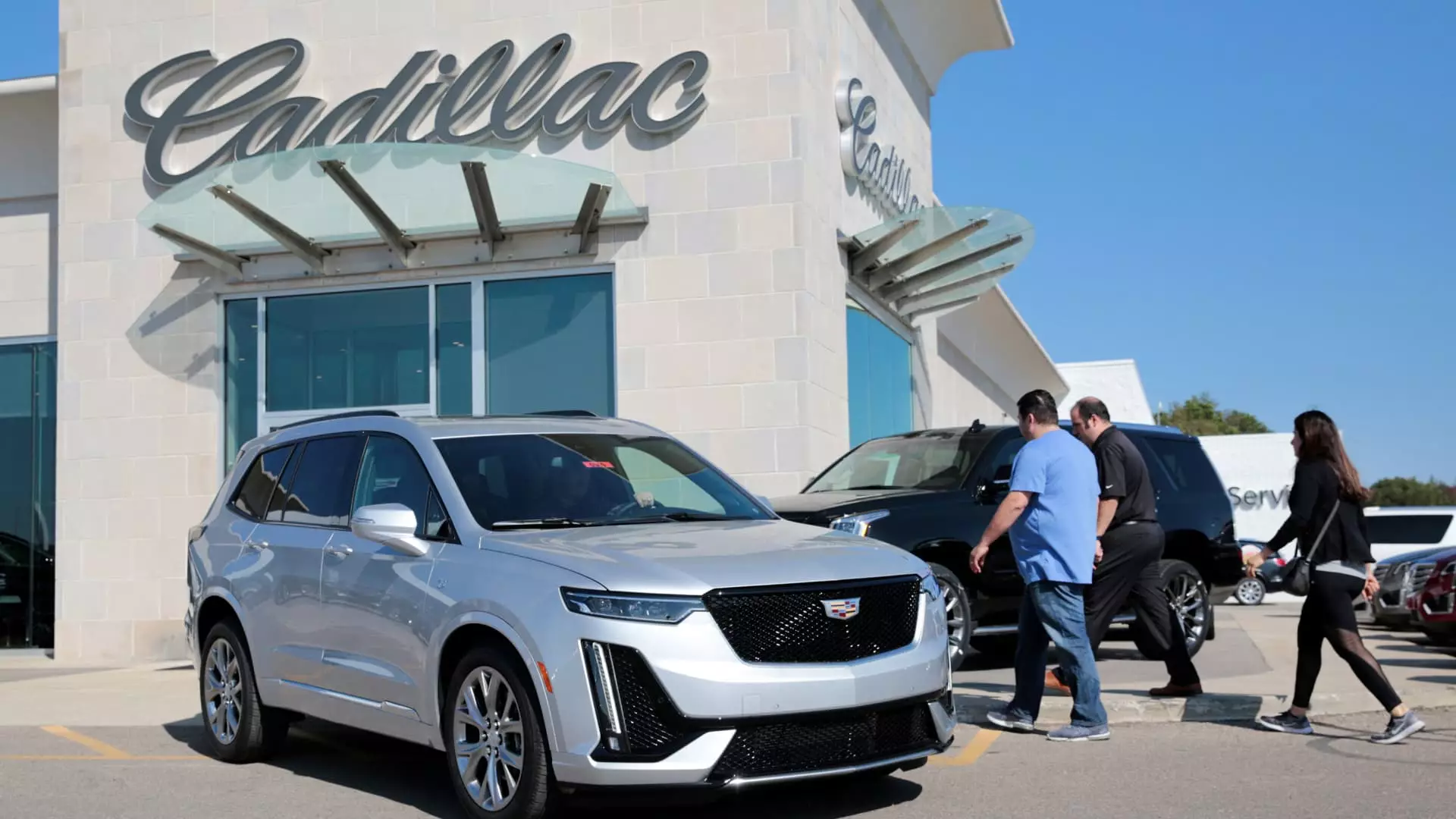General Motors’ decision to halt production of the XT6—a gasoline-powered Cadillac crossover—while extending the lifespan of the XT5 at its Spring Hill assembly plant marks a significant turning point for the automaker. This strategic pivot reveals more than just a simple shift in vehicle production; it is a clear signal that GM is wholly committed to the electric vehicle (EV) revolution, aligning itself with broader environmental trends while also reshaping consumer expectations. The ending of the XT6’s production symbolizes both a farewell to an era of traditional combustion engines and an embrace of innovative, cleaner technologies.
The XT6: A Reflection of Missed Opportunities
Despite being positioned as a premium offering in Cadillac’s lineup, the XT6 struggled to gain traction in a competitive market since its introduction in 2019. Averaging just around 19,000 units sold annually, it’s apparent that this model never quite resonated with its intended audience. In a landscape increasingly leaning towards sustainability, one must wonder—was the XT6 merely a lapse in judgment, reflecting GM’s inability to anticipate shifting consumer preferences? After all, the vehicle shared components with the less prestigious GMC Acadia, diluting its luxurious appeal and highlighting the contradictions inherent in its branding.
In an era where eco-conscious buyers are prioritizing electric options, the writing was on the wall. Cadillac chose to phase out a model whose sales underwhelmed, and by doing so, it signaled its readiness to pivot from a problematic past to a promising electric future.
Electric Dreams: The Way Forward
Interestingly, the plant’s production of Cadillac’s first true EV, the Lyriq, alongside the recent introduction of the Vistiq crossover, encapsulates the brand’s strategy moving forward. Cadillac’s recalibrated focus on electrification is not only timely; it is essential for the brand’s survival in an increasingly competitive automotive market. By introducing six new or updated products in such a short time, as stated in internal communications, Cadillac seems determined to reclaim a seat at the table of luxury automakers, not just in terms of opulence, but also environmental leadership.
It is indeed heartening to see a major player like GM, after years of reliance on gasoline-powered vehicles, finally embracing the electric wave. The company’s retreat from full EV ambitions by 2030 suggests a pragmatic approach, recognizing the complexities of consumer acceptance and infrastructure readiness. This flexibility could ultimately secure GM a stronger foothold in the EV landscape, especially as legacy automakers adapt to the new norms.
Labor Implications: Navigating Change
However, it’s crucial to acknowledge the human element buried beneath these corporate shifts. The decision to transition operations at the Spring Hill facility comes with underlying ramifications for workers. The memo mentioning scheduled downtime and potential layoffs speaks volumes about the challenges that accompany GM’s bold strategy. While the corporate narrative might focus on “strong customer demand” for certain models like the XT5, workers could face uncertainty in the wake of these adjustments.
This aspect of GM’s transitional period cannot be glossed over. Perhaps the company should actively engage its workforce during this transformation—the employees’ collective experience could be a greater asset than any internal memo can convey. If GM is genuinely committed to crafting a sustainable future, it must ensure that its labor force is equipped for the evolving automotive landscape, rather than left lingering in the shadows of discontinued models.

